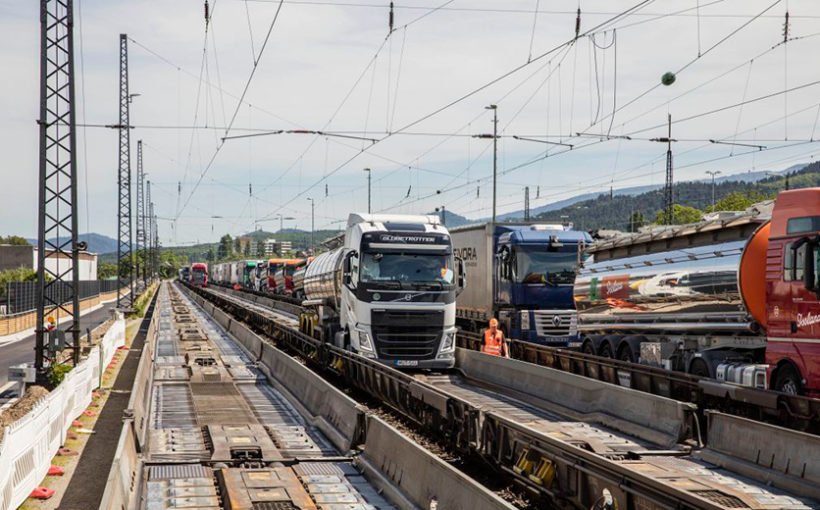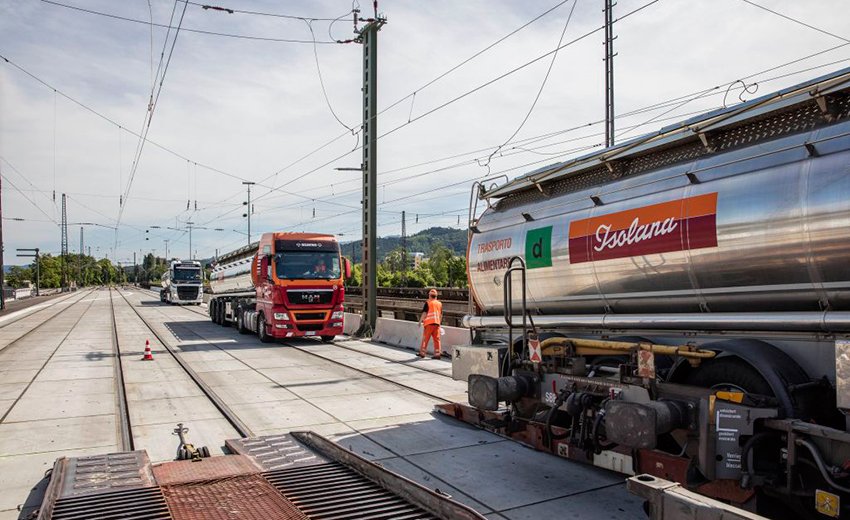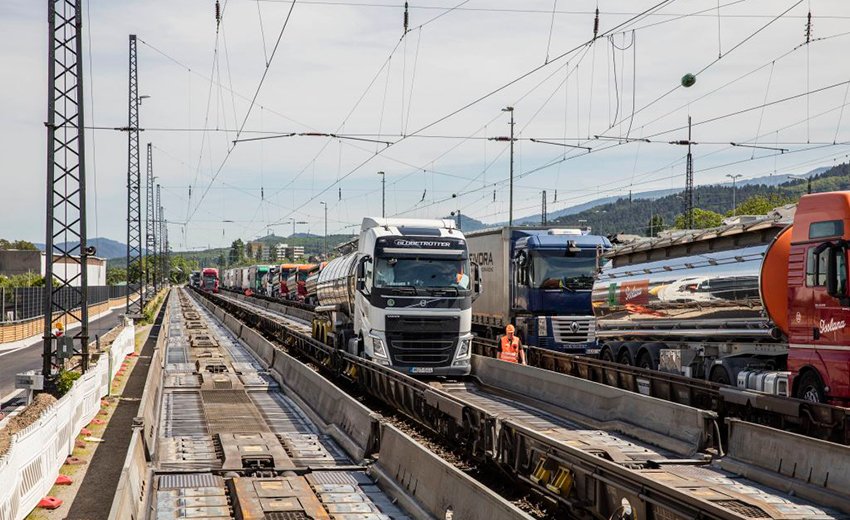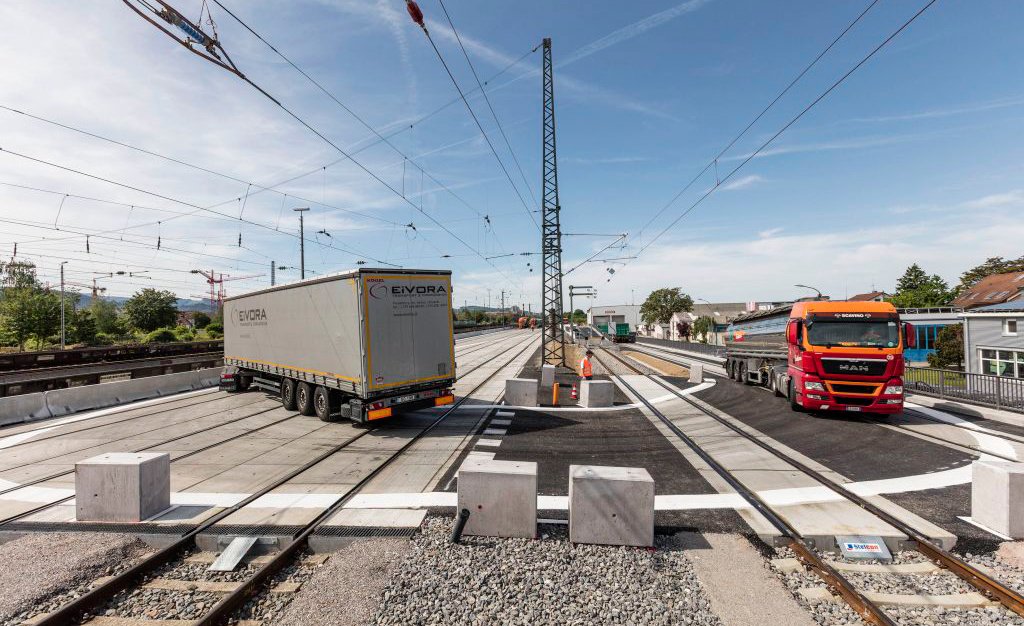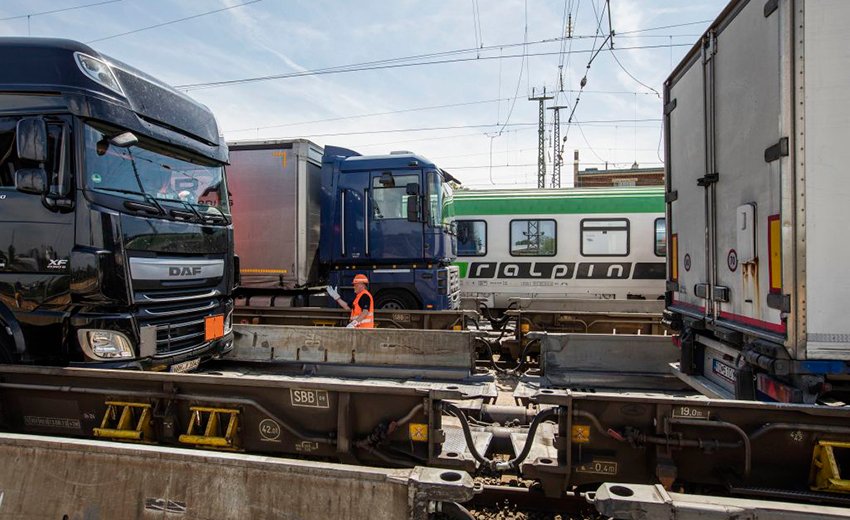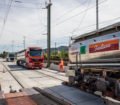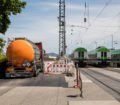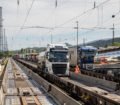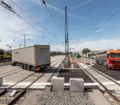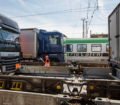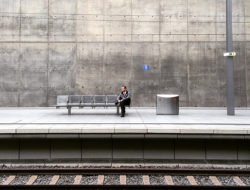Often presented as one of the solutions capable of reducing traffic congestion, piggyback transport is finding it hard to take root in Europe. The reason: low demand and infrastructure works which, in Belgium, would require colossal investment.
Piggyback transport consists of loading trucks onto railways. Unlike traditional rail freight which only transports containers, piggyback transport takes the entire trucks, cabs and drivers included onto the rails. Arriving at the destination station, the driver then drives the last few miles to the place he will unload.
In Europe, the first experiments of this kind go back to the 70s. In 2001. Switzerland opened its first complete piggyback transport line, which crosses the entire country and since then has removed 700,000 trucks from road traffic. Similar lines are being developed for transalpine traffic between Switzerland, Austria, the south of Germany and the north of Italy.
Environmental impact
A priori, this mode of transport has a number of advantages. At environmental level, it drastically reduces fuel consumption and therefore CO2 emissions. At mobility level, it reduces traffic on the roads and preserves them from the damage caused by trucks that inadvertently hollow out ruts in them. Nevertheless, this mobility solution is the source of much debate. First, from a strictly economic point of view, it poses questions for jobs in the transport sector: is a truck driver working and should he be paid when he is accompanying his truck on a railway wagon? Second, the development of infrastructures involves a colossal amount of investment.
Costly works

Frédéric Sacré, spokesman for Infrabel, sums up the stakes for Belgium: “In principle, we are in favour of all solutions that can reduce traffic on roads by using railways. But in the current budgetary context, piggyback transport would require such costly investment that this option does not appear to be realistic. “
First, the clearances of the engineering structures would have to be completely revamped. Belgium’s railway tunnels have mostly been built using rounded arches. At the moment they are not adapted to the size of the trucks that would be loaded on the tracks. In principle, there would be nothing to prevent us revamping the tunnels’ clearances… but they were already redeveloped twenty years ago for the transportation of “marine” type containers. Further works would therefore not be realistic.
” To get round this problem, we could consider reducing the height of the load, Frédéric Sacré continues. To do this, the diameter of the wagons’ wheels would have to come down from one metre to about 30 centimetres. But there would be another problem: the points would have to be adapted to the format of the new wheels as would the trace of the tracks and catenaries in many places. These works would cost tens of millions of Euros, at a time when we are expected to be making savings. “
No demand in Belgium.
Even if the Belgian infrastructure was adapted to piggyback transport, it remains to be seen whether there is a demand for this type of transport here. That isn’t clear at all. The last time the Belgian government made a statement on the matter was back in 2010. The Secretary of State for Mobility at the time, Etienne Schouppe, clarified that 95% of European piggyback transport is in Austria and Switzerland, where this solution is used to cross natural obstacles, in this case the mountain ranges of the Alps. In Belgium, the favoured mode remains conventional combined rail – road transportation, i.e. non-accompanied. This involves only loading containers onto the railway tracks, without the trucks’ cabs or drivers.
Towards European standardisation
Contrary to hearsay, the gauge of the tracks (the distance between a wagon’s wheels) is not a problem for crossing European borders by train. This has been standardised in most EU member states. The biggest problem is the signalling, where twenty or so different standards exist within the European Union. The solution will come from the ETCS (European Train Control System) a European signalling “standard” that, as soon as it applies everywhere, will avoid having to change locomotive at every border. Today, Belgium is a pioneer in Europe, with around 1,200 kilometres of track fitted with it. By 2022, Infrabel’s ambition is to extend it to the entire Belgian network “If all member states were going at the same pace as Belgium, by 2022 a container could be loaded at the Port of Amsterdam and cross the entire continent to Milan with the same locomotive and therefore the least constraint”, he concludes.
© Photos : RAlpin AG
Tags: Mobility, piggyback transport, rail transpor, railways, road transport



































